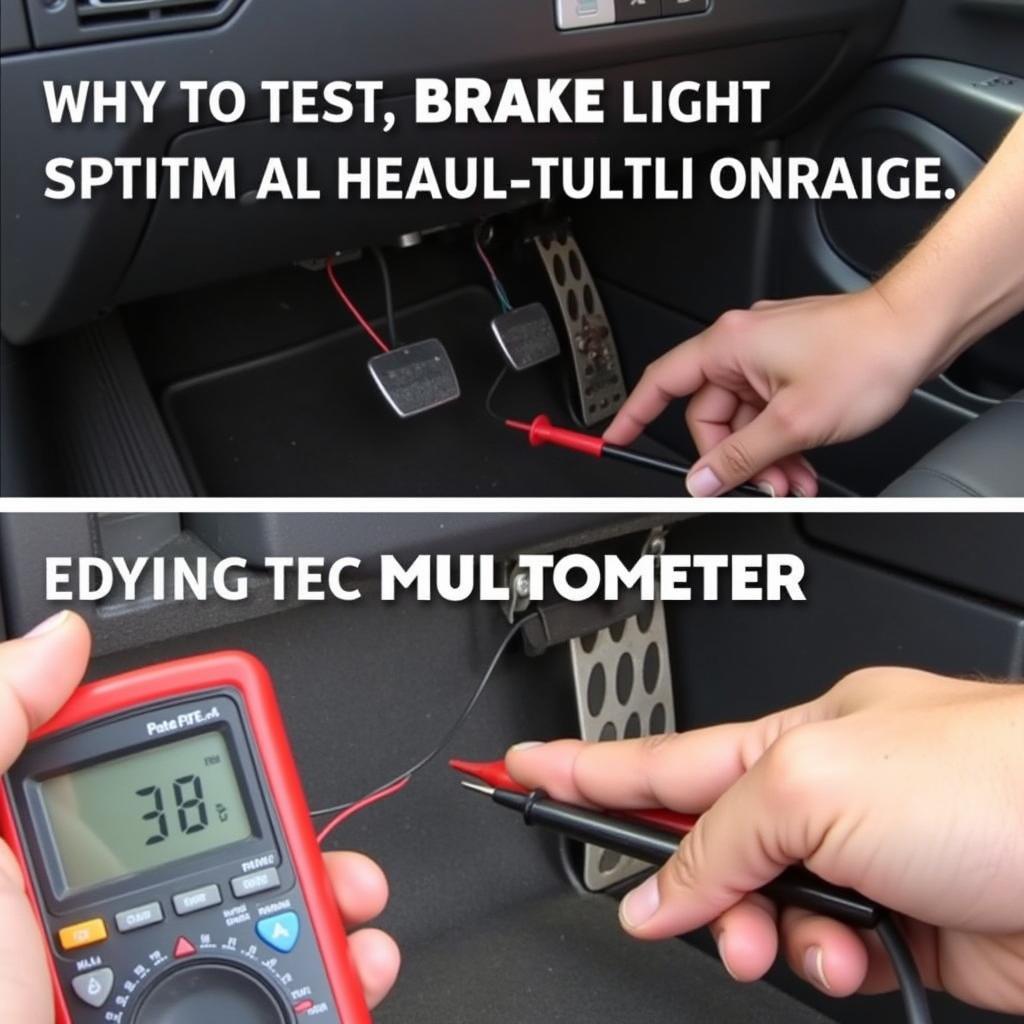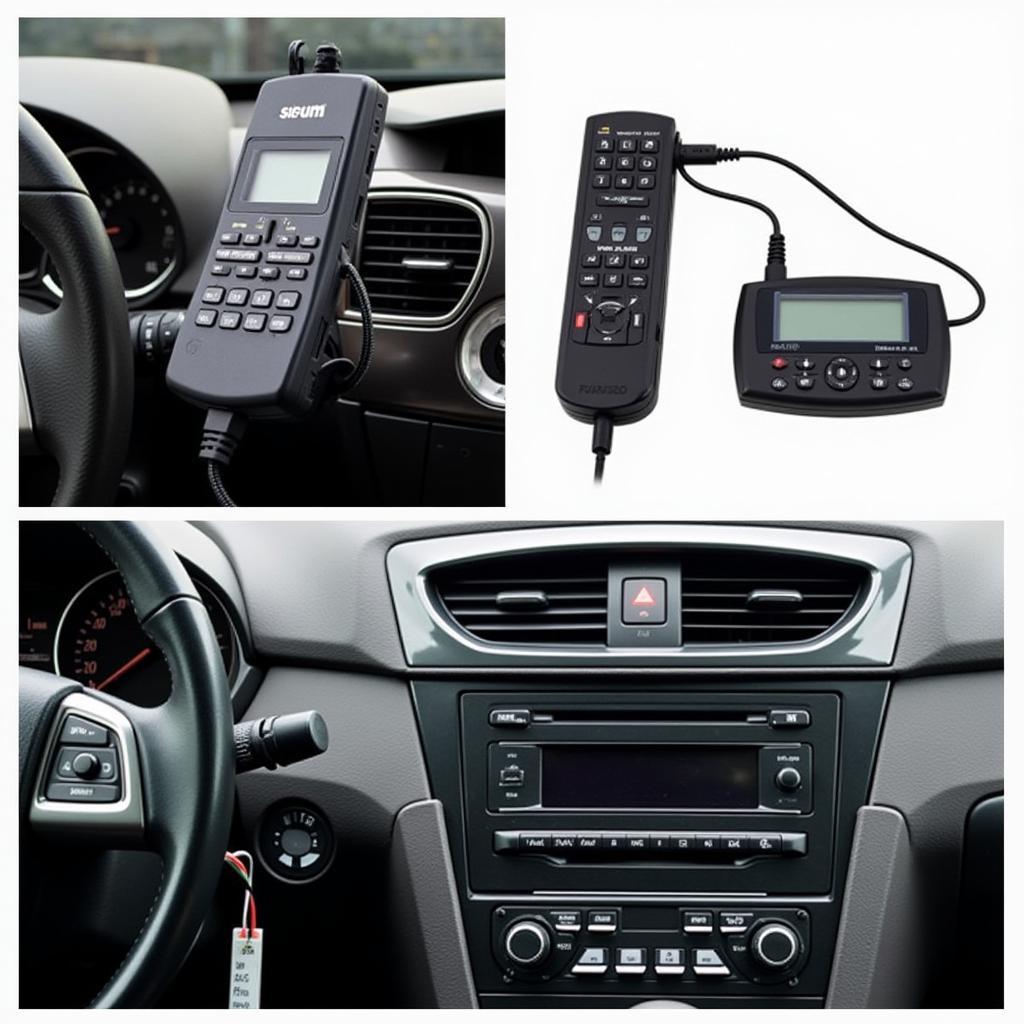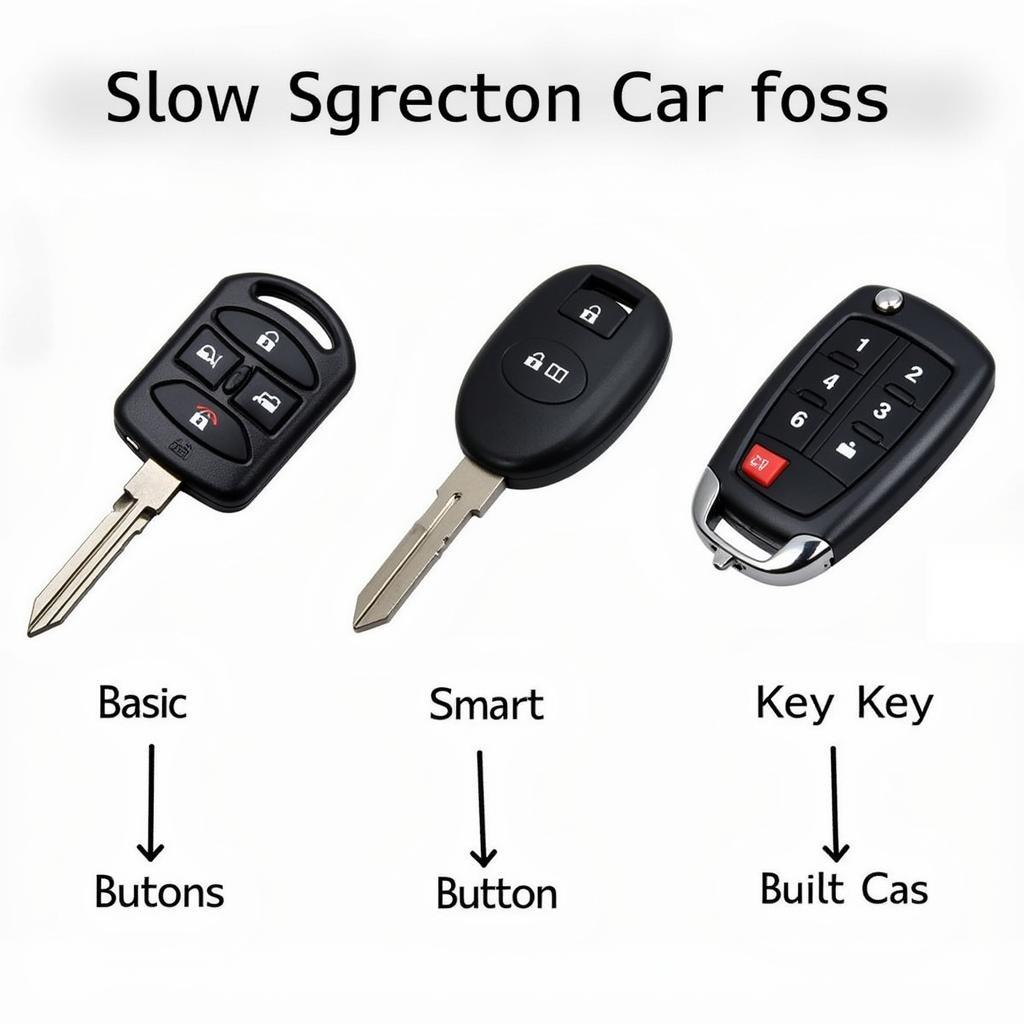You’re driving along, and suddenly, the brake warning light pops on. You check your brake fluid, and everything seems normal. Could it be the brake light switch? Surprisingly, yes! While it might sound counterintuitive, a faulty brake light switch can definitely be the culprit behind a glowing brake warning light.
This article delves into the intricate connection between your car’s brake light switch and the brake warning light system. We’ll explore the common symptoms, diagnostic steps, and potential solutions to help you get back on the road safely.
Understanding the Dual Role of Your Brake Light Switch
The brake light switch, often tucked away under the dashboard near the brake pedal, is a simple yet crucial component. It serves two primary functions:
-
Activating Brake Lights: When you press the brake pedal, the switch engages, completing a circuit that illuminates your brake lights, signaling to other drivers that you’re slowing down.
-
Signaling the Brake Warning System: In many modern vehicles, the brake light switch plays a secondary role in the brake warning system. It sends a signal to the vehicle’s computer, indicating when the brake pedal is depressed. This information is used to monitor brake fluid pressure, ABS functionality, and other safety-critical aspects of your braking system.
How a Faulty Switch Triggers the Warning Light
A malfunctioning brake light switch can disrupt the flow of information to your car’s computer. Here’s how:
-
Incomplete Circuit: A worn-out or damaged switch may not create a complete electrical circuit when you press the brake pedal. This can prevent the brake lights from illuminating and simultaneously trigger the brake warning light on your dashboard.
-
Incorrect Signal: A faulty switch might send intermittent or inaccurate signals to the vehicle’s computer. The computer, in turn, interprets these irregularities as a problem within the braking system itself, illuminating the warning light.
 Faulty Brake Light Switch
Faulty Brake Light Switch
Recognizing the Telltale Signs
Identifying a problematic brake light switch often involves observing a combination of symptoms, including:
- Illuminated Brake Warning Light: This is usually the first and most obvious sign.
- Non-Functional or Erratic Brake Lights: Your brake lights might not turn on at all, or they might flicker intermittently.
- Difficulty Shifting from Park: Some vehicles require a functional brake light switch to disengage the shift interlock, which prevents shifting out of “Park” without pressing the brake pedal.
- Cruise Control Malfunction: Since the brake pedal deactivates cruise control, a faulty switch can disrupt its operation.
“In my experience, a surprising number of brake warning light issues stem from a simple, inexpensive part – the brake light switch. It’s always the first thing I check,” says automotive electrician, Mark Stevenson.
Diagnosing the Issue
If you suspect your brake light switch is the culprit, here are some steps to help confirm the diagnosis:
- Visual Inspection: Check the brake lights for proper illumination when the brake pedal is pressed.
- Physical Check: Locate the brake light switch (consult your owner’s manual) and gently depress it. Listen for a distinct “click” sound, indicating the switch is engaging and disengaging.
- Testing the Circuit: If you’re comfortable with basic electrical work, you can use a multimeter to test the continuity of the brake light switch circuit.
- Professional Diagnosis: For a definitive diagnosis, consider visiting a qualified mechanic equipped with the tools and expertise to pinpoint the issue accurately.
 Testing Brake Light Switch with Multimeter
Testing Brake Light Switch with Multimeter
Resolving the Problem
Replacing a faulty brake light switch is typically a straightforward repair for a mechanic.
99 vw beetle brake warning light
how to test brake warning light circuit
The exact process varies depending on the make and model of your car, but it generally involves:
- Locating and disconnecting the old switch.
- Installing the new switch and connecting it to the wiring harness.
- Testing the new switch for proper operation.
While replacing the brake light switch yourself is possible for those with mechanical skills, it’s generally advisable to consult a professional to ensure the job is done correctly.
can warning brake light come on due to cold weather
brake system warning light honda civic
brake warning circuit diagram
Don’t Ignore the Warning
A glowing brake warning light is a serious matter that should never be ignored. While a faulty brake light switch can be a relatively simple fix, it’s crucial to address the issue promptly to prevent potential safety hazards. Remember, a functioning brake light system is essential for your safety and the safety of other drivers on the road.



